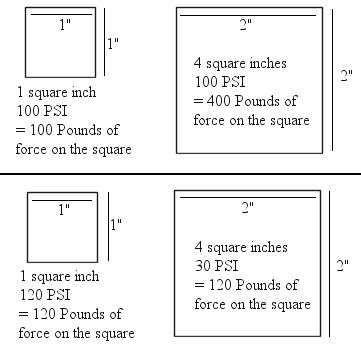general piston info
So what is a piston valve? Basically it is a type of valve used to allow a pressurized gas to flow rapidly from a pressurized vessel. It serves the same purpose as a ball valve, but it uses the force from the pressurized gas to open the valve. The main benefits of a piston valve are fast opening times, little force required by the user, and the fact that it is relatively easy to build one that fits your needs. This section of the site won't tell you how to build one, but it will tell you how they work. Once you truly understand how the valves work it becomes much easier to design and build the valve that you want.
Before learning about how any piston valve works, it is important to learn about what makes them work. The working principle in all piston valves is a pressure differential. In the United States pressure is measured in "psi" which stands for pounds per square inch. If you think about what pounds per square inch really means then you can see that the force acting on an object can be changed by changing the amount of pressure (psi) or by changing the area amount of area for the pressure to act. To illustrate this concept here is a quick picture.

This concept is pretty basic, but it is very important to have a firm grasp on this idea because this is where all the forces come from in piston valves.
I would recommend reading the coaxial page first because it is easiest to understand (in my opinion). Once you understand one type of valve then you will see that all of the others are basically the same.